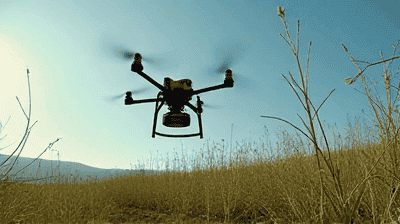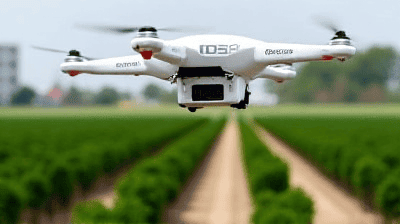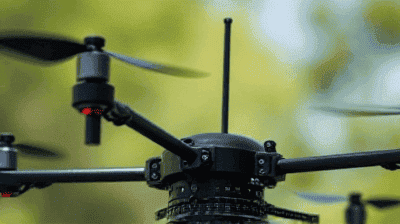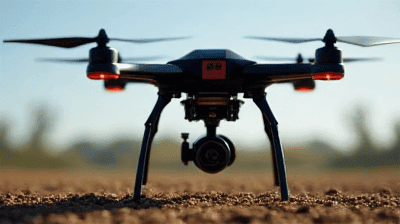
As global temperatures rise and ecological imbalances worsen, the need for effective reforestation efforts has never been more urgent. Forestation plays a critical role in combating climate change, restoring ecosystems, and preserving biodiversity. However, traditional methods of planting trees can be labor-intensive and time-consuming. In recent years, an innovative solution has emerged that harnesses the power of technology: drones that can plant trees.
Reforestation is the process of replanting trees in areas where forests have been depleted or destroyed. This can occur due to factors such as logging, agricultural expansion, urban development, and natural disasters like wildfires. Reforestation aims to restore lost ecosystems, improve air and water quality, enhance biodiversity, and sequester carbon from the atmosphere.
Reforestation serves a multitude of purposes that are vital for environmental health and sustainability:
Combating Climate Change: Trees absorb carbon dioxide during photosynthesis, making them essential for mitigating climate change. Restoring forest cover can help sequester significant amounts of CO2, contributing to climate goals.
Biodiversity Enhancement: Forests host a diverse array of plants and animals, providing habitats for countless species. Reforestation helps restore these habitats and supports ecosystem resilience.
Soil Protection: Tree roots stabilize the soil, preventing erosion and promoting soil fertility. Reforestation reduces runoff, enhances water retention, and protects waterways from sedimentation.
Economic Opportunities: Healthy forests provide resources such as timber, non-timber forest products, and ecotourism opportunities, supporting local economies and livelihoods.
Community Wellbeing: Reforestation initiatives can benefit local communities by providing access to resources, improving air quality, and enhancing landscapes.

While reforestation is critical, traditional tree planting methods face several challenges:
Labor Intensity: Manual tree planting is labor-intensive and requires a significant workforce, especially for large-scale projects.
Cost: Hiring laborers or volunteers for tree planting can be expensive, particularly in remote or difficult-to-access areas.
Limited Coverage: Traditional methods may struggle to cover vast areas of land or challenging terrains, leading to incomplete reforestation efforts.
Survival Rates: Trees planted manually may suffer from inadequate planting techniques, leading to lower survival rates. Factors such as soil health, competition from weeds, and environmental stressors play a role.
Time Constraints: Planting trees manually takes time, and delays in planting can result in missed opportunities for restoration, especially in areas that are at risk of further degradation.
Drones equipped with specialized technology offer a revolutionary approach to tree planting. These unmanned aerial vehicles (UAVs) can efficiently cover large areas and plant seeds with precision. The process typically involves:
Mapping and Surveying: Drones can be used to create high-resolution maps of areas in need of reforestation. This data helps identify the best locations for planting based on factors such as soil type, vegetation, and terrain.
Seed Dispersal: Drones can carry seed pods containing pre-germinated seeds or seeds encased in nutrient-rich pellets. They can drop these pods in designated areas, employing advanced release mechanisms to ensure even distribution.
Monitoring Growth: Once the seeds are planted, drones equipped with cameras and sensors can monitor the sites over time. This technology enables tracking of growth rates, survival rates, and the overall health of the emerging forest.
The use of drones for reforestation comes with several key advantages:
Efficiency and Speed: Drones can cover large areas quickly, reducing the time required for reforestation projects. They can plant thousands of seeds in a single flight, making them a potential game-changer for large-scale efforts.
Cost-Effectiveness: By automating the planting process, drones can reduce labor costs and operational expenses. This is particularly beneficial for projects in remote locations where access is challenging.
Precision and Accuracy: Drones can target specific areas for planting, ensuring a more uniform distribution of seeds. This precision enhances the chances of successful germination and growth.
Accessibility: Drones can access difficult terrains, including steep hillsides or areas with dense underbrush, where traditional planting methods may be unfeasible.
Data Collection and Analysis: The use of drones allows for comprehensive data collection regarding soil health, moisture levels, and existing vegetation. This data-driven approach helps inform planting decisions and improve success rates.

Around the globe, various organizations and initiatives are harnessing drones for reforestation efforts. Here are some notable examples:
BioCarbon Engineering is a leader in the field of drone-assisted reforestation. The company has developed a system that uses drones to map and assess planting sites, as well as deliver seed pods at high speed. Their pilot projects have demonstrated the potential for planting millions of trees efficiently in various regions, from Australia to the United States.
Droneseed, based in the United States, focuses on using drones for reforestation in post-wildfire areas. Their technology combines aerial seed planting with ground-based drones that transport seed pods. Droneseed aims to help restore ecosystems affected by wildfires, providing an automated solution for replanting trees in challenging environments.
Land Life Company gears its work towards restoring degraded ecosystems through technology-driven solutions. Their drone seed dispersal system combines aerial technology with innovative seed pod designs, enhancing survival rates and supporting natural regeneration. Projects have been implemented in various countries, demonstrating the versatility of drone-assisted reforestation.
In collaboration with California state agencies, drone technology has been employed to combat forest degradation and enhance reforestation efforts. Drones are used to identify areas most in need of restoration, which is essential in the face of challenges posed by climate change and wildfires.
The United Arab Emirates has embraced drone technology to address desertification issues and promote reforestation in arid regions. The government has invested in using drones to plant trees and shrubs, supporting biodiversity and combating soil erosion in the desert landscapes.
While drone technology holds great promise for reforestation, several challenges remain:
The widespread use of drones is subject to regulatory frameworks that govern airspace and aviation. For reforestation projects, it is essential to navigate these regulations to ensure compliance and safe operations.
Drones have limitations, including battery life, payload capacity, and operational range. Researchers are continually working to improve drone technology to enhance performance and expand applications in reforestation.
The success of drone planting relies heavily on the quality of seeds and soil conditions. Seed pods must be designed to protect the seeds during aerial deployment and ensure successful germination. Additionally, site assessments are crucial for determining plant species that will thrive in specific environments.
While drones can efficiently deliver seeds, ongoing monitoring of the planted areas is necessary to ensure growth and address potential issues such as pests, diseases, or environmental challenges. Utilizing drones for monitoring is possible, but continuous data collection can present challenges.
The success of reforestation initiatives also depends on community engagement and public support. Local stakeholders, including landowners and community members, must be informed and involved in the process to ensure alignment with ecological and social values.

The future of drone-assisted reforestation appears promising, with ongoing advancements in technology and methods likely to enhance its effectiveness and impact:
Advancements in battery technology, payload capacity, and flight efficiency will continue to make drones a more effective tool for reforestation. Innovations in navigation systems and artificial intelligence will enhance their ability to survey and assess planting sites accurately.
Combining drones with remote sensing technologies such as satellite imagery and geographical information systems (GIS) can provide comprehensive insights into landscape health, vegetation patterns, and climate impacts. This data integration will enhance decision-making processes in reforestation planning.
Future innovations may lead to better-designed seed pods that improve germination rates and protect seeds during transit. This could involve incorporating nutrients, moisture retention properties, or bioengineering techniques to enhance hardiness against environmental factors.
The versatility of drone technology could lead to its application beyond reforestation, including forest management, monitoring biodiversity, or assessing ecosystem health. The potential to support conservation efforts in a variety of landscapes can enhance overall ecological resilience.
Increased awareness of the benefits of drone-assisted reforestation may lead to supportive policies that promote its use. Collaboration among governments, NGOs, and private enterprises can facilitate funding opportunities and establish best practices for implementation.
Drones that plant trees represent a revolutionary advancement in reforestation efforts, combining technology with environmental stewardship. The ability to efficiently plant seeds over vast areas, monitor growth, and respond to ecological needs is helping to transform the field of forestry and conservation.
As the world grapples with the impacts of climate change and deforestation, embracing innovative solutions like drone-assisted reforestation can make a significant difference. By automating the process of planting trees and restoring ecosystems, we have the opportunity to revitalize landscapes, enhance biodiversity, and contribute to a more sustainable future.
Through collaboration between technology developers, environmental organizations, and communities, we can harness the full potential of drone technology to create a greener, healthier planet for generations to come.